EGEV Keynote I
Mapping the Stars: From Drawings to Virtual Flights of the Cosmos
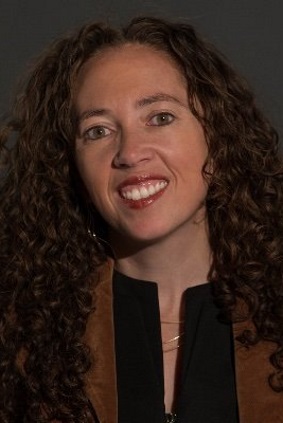
Jackie Faherty
American Museum of Natural History
https://www.jackiefaherty.com
Astronomical research depends upon our ability to make precise and accessible maps of the cosmos. In ancient times, astronomers were limited to hand drawings of the sky which visually told the story of brightness and position to the best of the human artistic hands ability. As centuries passed, technology advanced and cosmic drawings were replaced by photographs. Modern day astrophysics now relies upon computational power to drive multi-dimensional representations of our Universe. In this keynote I will highlight the evolution of cosmic mapping and focus on what happens when bleeding edge science meets cutting edge graphical interpretations. I will showcase a NASA funded software package called OpenSpace which is revolutionizing scientific visualizations of the cosmos as well as bringing stories of the stars to the general public.
Jacqueline Faherty is an Astrophysicist at the American Museum of Natural History working jointly within the Education and Astrophysics departments. Dr. Faherty has won numerous awards and grants to pursue cutting edge science questions such as the NASA Hubble Fellowship and the National Science Foundation’s International Research fellowship. She co-founded the research group “Brown Dwarfs New York City” (BDNYC) and her team has won multiple grants from NASA, NSF, and the Heising Simons foundation to support projects focused on characterizing planet-like objects. Dr. Faherty has over 90 peer reviewed articles in Astrophysical journals, has been an invited speaker at Universities and conferences across the globe and is a major advocate for utilizing visualization tools for both science and education advancements. In 2017 she co-founded a Zooniverse citizen science project called “Backyard Worlds: Planet 9” which has engaged more than 150,000 users across the globe and led to 4 scientific publications to date with multiple citizen science co-authors. Aside from her scientific achievements, Dr. Faherty is a regular media personality, commenting on current astronomical phenomena and research on such reputable outlets as NPR, the BBC, CNN, and the NY Times.
EGEV Keynote II
Understanding Visual Appearance from Micron to Global Scale
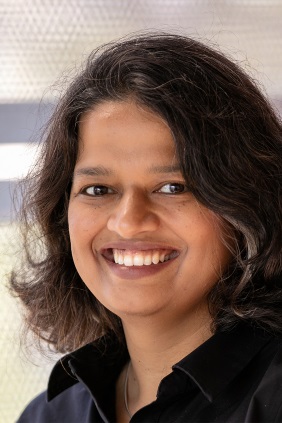
Kavita Bala
Cornell University
https://www.cs.cornell.edu/~kb
Augmented reality/mixed reality (AR/MR) is poised to create compelling and immersive user experiences by combining computer vision and computer graphics. Imagine users interacting with the world around them through their AR device. Visual search tells them what they are seeing, while computer graphics augments reality by overlaying real objects with virtual objects. AR/VR can have a far-ranging impact across many applications, such as retail, virtual prototyping, and entertainment.
In this talk, I will describe my group’s research in these complementary areas: graphics models for realistic visual appearance, and visual search and fine-grained recognition for scene understanding. We will also see how these technologies can go beyond AR/VR applications to enable visual discovery—using recognition as a core building block, we can mine social media images at a global scale to discover visual patterns and trends across geography and time.
Kavita Bala is the Chair of the Computer Science Department at Cornell University. She received her S.M. and Ph.D. from MIT, her B.Tech. from IIT (Bombay), and co-founded GrokStyle (recently acquired by Facebook). Bala specializes in computer vision and computer graphics, leading research in recognition and visual search; physically-based scalable rendering; material modeling and acquisition using physics and learning; and perception. Bala has authored 100+ peer-reviewed publications, the graduate-level textbook “Advanced Global Illumination”, and has served as the Editor-in-Chief of Transactions on Graphics (TOG), and as chair of SIGGRAPH Asia Papers in 2011. She is an ACM Fellow.
EGEV Keynote III
Towards Usability, Transparency, and Trust for Data-Intensive Computations
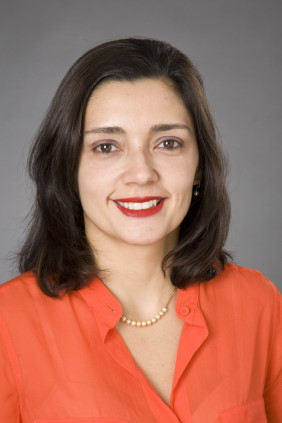
Juliana Freire
New York University
https://engineering.nyu.edu/faculty/juliana-freire
The abundance of data, coupled with cheap and widely-available computing and storage, has revolutionized science, industry and government alike. Now, to a large extent, the bottleneck to actionable insights lies with people. To extract knowledge from data, complex computations need to be assembled; these are often out of reach for domain experts that do not have training in computing. In addition, in the path from data to decisions there is much room for error, from problems with the data and computations to human mistakes. In this talk, I will present a set of projects that combine methods from multiple areas of computer science and systems we have built to empower domain experts to explore data. I will also discuss the importance of having provenance of the data exploration process to not only support transparency and reproducibility, but also enable experts to build trust on the insights they derive.
Juliana Freire is a Professor of Computer Science and Data Science at New York University. Previously, she was a faculty member at the University of Utah and Oregon Health & Sciences University, and a Research Staff Member at the Database Systems Research group at Bell Labs Research (Lucent Technologies). She is the elected chair of the ACM Special Interest Group on Management of Data (SIGMOD). Freire is also a council member of the Computing Research Association’s Computing Community Consortium (CCC), was the lead investigator and executive director of the NYU Moore-Sloan Data Science Environment, and served as a member of the National Academies Committee on Reproducibility and Replicability in Science. Her research interests are in large-scale data analysis, curation and integration, visualization, provenance management, and web information discovery. She has made fundamental contributions to data management methods and tools that address problems introduced by emerging applications including urban analytics and computational reproducibility. She is an ACM Fellow and a recipient of an NSF CAREER, two IBM Faculty awards, and a Google Faculty Research award. Her research has been funded by the National Science Foundation, DARPA, Department of Energy, National Institutes of Health, Sloan Foundation, Gordon and Betty Moore Foundation, W. M. Keck Foundation, Google, Amazon, AT&T Research, Microsoft Research, Yahoo! and IBM. She received M.Sc. and Ph.D. degrees in computer science from the State University of New York at Stony Brook.
EGEV Keynote IV
Perception Driven Computational Shape Design
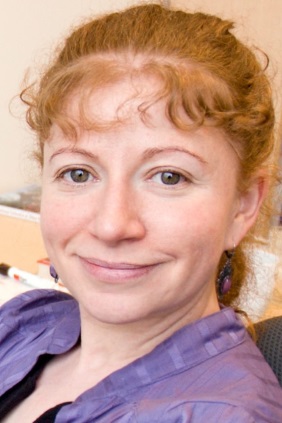
Alla Sheffer
University of British Columbia
https://www.cs.ubc.ca/~sheffa
Humans have developed multiple ways to communicate about both tangible and abstract shape properties. Artists and designers can quickly and effectively convey complex shapes to a broad audience using traditional mediums such as paper, while both experts and the general public can analyze and agree on intangible shape properties such as style or aesthetics. While perception research provides some clues as to the mental processes humans employ when performing these tasks, concrete and quantifiable explanations of these actions are still lacking. Our recent research aims to quantify the geometric properties underlying human shape communication and analysis, and to develop algorithms that successfully replicate human abilities in these domains. In my talk I will survey our efforts in this space – describing methods for creation of shaded production drawings that provide the illusion of depth from concept sketches; sketch based modeling algorithms that automatically create complex 3D shapes from artist-generated line drawings in a range of domains, including industrial design and character modeling; raw sketch consolidation; perception driven vectorization; intuitive garment design; and methods for style analysis and transfer for a range of man-made shapes. The common thread in these approaches is the use of insights derived from perception and design literature combined with subsequent perceptual validation via a range of user studies.
Alla Sheffer is a professor of Computer Science at the University of British Columbia, where she investigates algorithms for shape modeling and analysis in the context of computer graphics applications. She is best known for her research on mesh parameterization, hexahedral meshing, computational garment design, and perception driven shape modeling. Dr. Sheffer is the recipient of the Canadian Human Computer Communications Society Achievement Award’18 and a UBC Killam Research Award’19. Her research has been supported by faculty awards from IBM, Google and Adobe, Discovery, Discovery Accelerator and I2I NSERC grants, a Killam Research Fellowship, and an Audi Production Award. Dr. Sheffer has served as an Associate Editor of all three major computer graphics journals (ACM Transactions on Graphics, IEEE Transactions on Visualization Computer Graphics, and Eurographics Computer Graphics Forum). She served as a program co-chair for Eurographics’18, Symposium on Geometry Processing’06, and Shape Modeling’13. She was a general co-chair for the Pacific Graphics’18 and Geometric Modeling and Processing’19 conferences. Dr. Sheffer had co-authored over 100 peer-reviewed publications, including 44 papers in ACM Transactions on Graphics, the topmost competitive CG venue; 22 of these were published in the last five years. She holds six recent patents on methods for sketch analysis and hexahedral mesh generation.
Factfulness
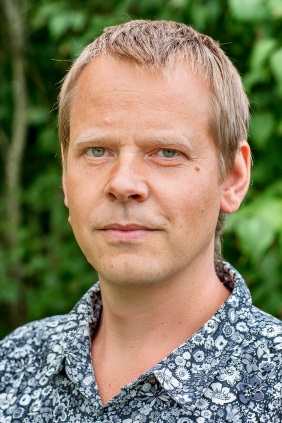
Ola Rosling
President & Co-Founder of Gapminder Foundation
https://www.gapminder.org
Ola Rosling is President & Co-Founder of the Gapminder Foundation which he founded together with his wife and his father.
Since 1999 Ola lead the development of the Trendalyzer software, which was acquired by Google in 2007. At Google Ola and his team delivered the Motion Chart as part of Google Spreadsheets. As Product Manager for Google Public Data Ola then helped democratized access to Public Statistics by developing the infrastructure needed to make official statistics part of Google Search results. Ola & Anna went back to Gapminder in 2011 to develop free teaching materials for a fact-based worldview.
In 2014 Ola coined the term Factfulness, which Gapminder is now promoting in order to make the education about Sustainable Development less ideological and more fact-based.
Together with Anna and Hans, Ola wrote the Factfulness book, launched in April 2018.
Industrial Keynote I
AI+Computer Graphics: The Neural Revolution in Image Synthesis
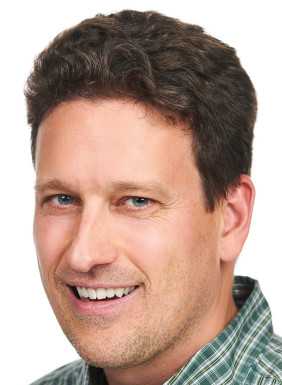
David Luebke
Vice President of Graphics Research at NVIDIA
https://www.nvidia.com/en-us/research/
Deep neural networks and their derivatives are revolutionizing computer graphics (image synthesis) just as they have already upended computer vision (image analysis and understanding), natural language processing, and other fields. This revolution is exciting for graphics architecture, since most deep learning runs on the same GPUs used for graphics pipelines and comes at the same time as the disruptive emergence of real-time ray tracing hardware. I will highlight some recent and ongoing projects at NVIDIA that showcase how DNNs are being used to augment existing rendering pipelines, produce and refine 3D content, and even generate raw photorealistic imagery completely from scratch. I will end with a call to think about the technological, social, and ethical implications of democratized realistic image synthesis powered by internet-scale training on real imagery.
Dr. David Luebke is the vice president of graphics research at NVIDIA. Luebke helped found NVIDIA Research in 2006 after eight years on the faculty of the University of Virginia. Luebke received his Ph.D. under Fred Brooks at the University of North Carolina in 1998. Luebke is a Fellow of the IEEE, an NVIDIA Distinguished Inventor, a NSF CAREER and DOE Early Career PI, and recipient of the ACM Symposium on Interactive 3D Graphics “Test of Time Award”. Dr. Luebke has co-authored a book, a SIGGRAPH Electronic Theater Piece, a major museum exhibit attended by over 110,000 visitors, and over a hundred papers, articles, chapters, and patents. His principal research interests are augmented & virtual reality, real-time rendering, and the intersection of computer graphics with machine learning.
Industrial Keynote II
The Art of Intel’s Advanced Ray Tracing
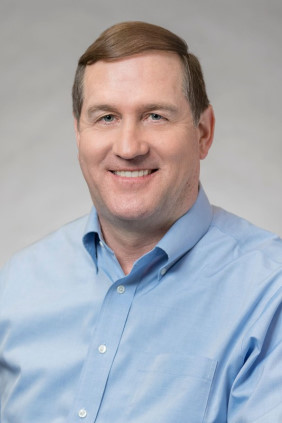
James L. Jeffers
Sr. Principal Engineer, Sr. Director, Advanced Rendering and Visualization at Intel Corporation
Intel oneAPI Rendering Toolkit
A passionate, results-oriented technology and engineering leader with a unique combination of strategic vision and strong tactical delivery expertise. Author and presenter on parallel computing hardware and software. Industry expertise in high performance computing (HPC), scientific visualization, parallel computing, graphics and video device drivers, agile product development life cycle, and VoIP telecommunications.
Industrial Keynote III
The Globe in 3D – a High Resolution Digital Twin of the Entire Earth

Leif Haglund
CTO & Vice President of Vricon
https://vricon.com
The presentation will describe the process to create the Globe in 3D based on high resolution, 0.5m, satellite data. It will touch on different technology subjects needed for this, e.g. Big Data, Image Processing, Multiview Stereo, Sensor Modeling. It will also present some novel ideas of automatic land use classification based on ensemble networks and deep learning. The 3D data will be shown through our 3D rendering and visualization software, Vricon Explorer. Moreover, different tools for adapting the visualization in Vricon Explorer as well as applications utilizing the 3D data will also be demonstrated.
Dr. Haglund, received his PhD in Computer Vision from Linköping University, Sweden, in 1992. He also holds a MSc in Electrical Engineering and Applied Physics from Linköping University. After a post-doc period at Queens University, Kingston, Ontario, Canada, Dr. Haglund joined Saab in 1995 working with radar and optronic applications both with functional design and sensor signal processing. Between 2001-2007, he served as a Director for the sensor development department within Saab Dynamics, overseeing approximately 100 development engineers. As the CTO of Vricon, Dr. Haglund now oversees the R&D, patent portfolio and technology strategy as well as the product roadmap. He has published around 30 articles in the field of computer vision and was runner up for “Ny Tekniks Swedish Innovations price” in 2009. He also holds approximately 25 patents and patent applications.
Prior to the foundation of Vricon he also has participated in several intrapreneurial projects based on military image processing and computer vision. Three of these projects were spun out of Saab:
- Saab Traffic Systems, a world-leading company in systems for electronic road tolling. Saab Combitech Traffic Systems was sold to Kapsch in 2001.
- Tracab, formed in 2005, provided one of the most advanced camera-based player and ball tracking systems in the market.
- C3Technologies, which was started in 2008, developed 3D models using photogrammetric methods. Dr. Haglund served on the board for C3 which was sold in July 2011 as the fastest billion SEK exit in Swedish technology history.